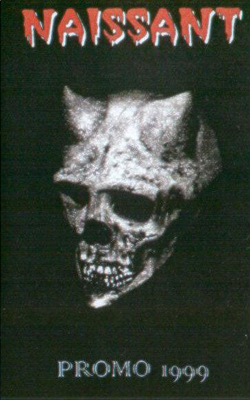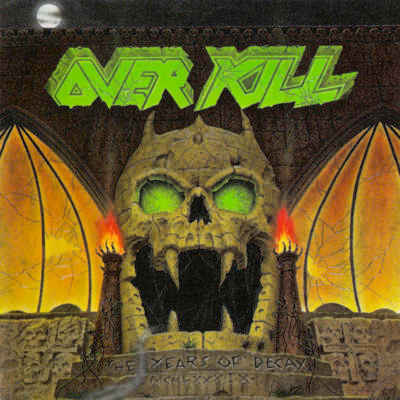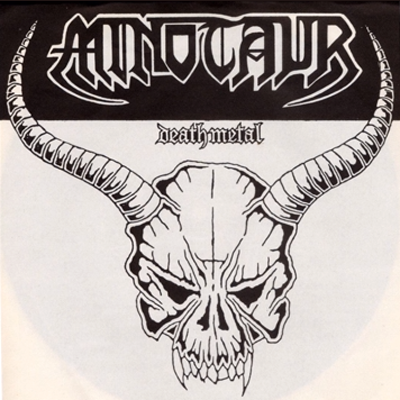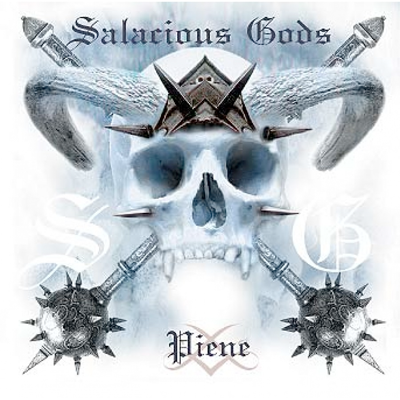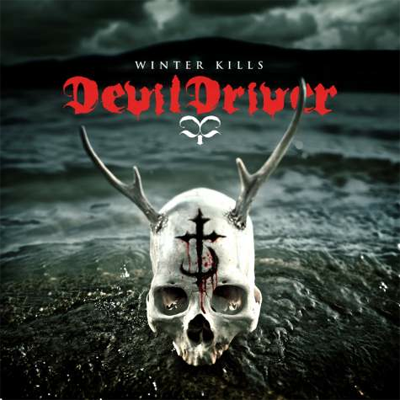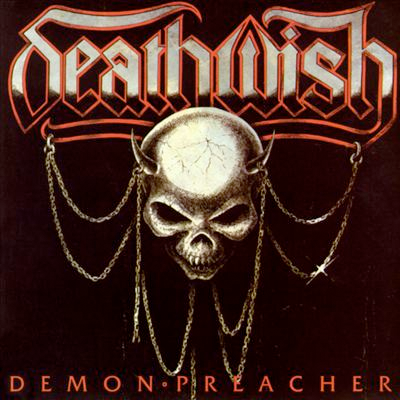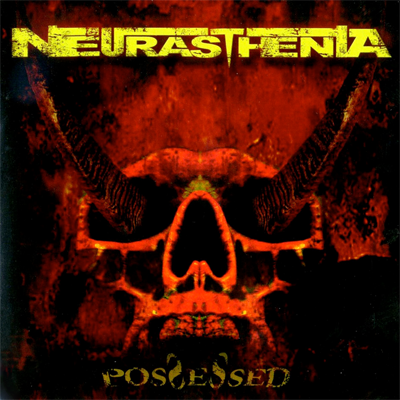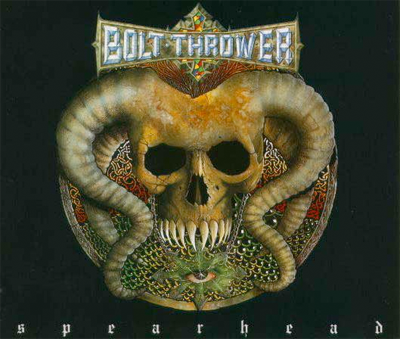
BOLT THROWER, Spearhead (1992, Earache)
The skull:
This oddly shaped skull (note the depression in the dome) bears four downward-pointing horns that appear to be of a bony piece with the skull. There’s no bottom jaw, but that’s just as well because it would be hard to fit in all those pointy teeth if they had matches underneath. The ominous, ancient-looking skull floasts atop an eldritch amulet of some sort, intricately worked and featuring a miasmic symbol of eight underneath. It’s the heavy-lidded eye in the center of that star that gives this up immediately as a Bolt Thrower cover. No other band has worked such magic with that otherwise cliched symbol of chaos than Bolt Thrower. One suspects that if they had chosen to go with pentagrams from the start, they could have made even that hackneyed totem classy.
The music:
We Friars in the service of the Council hold many opposing musical positions. Friar Wagner loves Darkthrone, I love Angra. He loves Italian prog rock with ludicrous acronymic names, I love bubblegummy power pop from the 70s. But there is one musical truism in the priory, held above all others by the Council themselves: Bolt Thrower rules supreme. It is permissible, of course, to prefer one Bolt Thrower album over another (although it is universally recognized that Realm of Chaos is the best), and there is room, even, for debate over the merit of Dave Ingram. So, when speaking of Bolt Thrower, it is not necessary to state that a release is good, but only how good. Spearhead is a single/EP released in support of The IVth Crusade, which I generally hold to be a middling album in the band’s mighty discography. On one hand, there’s something to be said for the smoothness of the sound and the greater degree of melodicism in the riffing, but on the other hand, one can’t help but miss the punishing heaviness of Realm or even the band’s (so far) swansong, Those Once Loyal. “Spearhead” is also not my choice for the best song on that album (nor, evidently, the band’s, as they generally only play the title track from that album live anymore) but it’s good enough, even if the “extended remix” does little to improve upon the original. “The Dying Creed” is an excellent number from the album also presented here, with a great dirgey chorus that highlights the unique pessimism of the lyrics on the album as a whole (normally, Bolt Thrower’s war-themed lyrics take a neutral moral position on their subject). The real value in this single, though, is in the two non-album tracks, “Crown of Life” and “Lament.” While I wouldn’t call them the band’s greatest songs, they’re certainly excellent additions to the corpus and a reminder that at one time, the band had too much good material for an album, instead of too little, as the case sadly seems to be now. “Crown of Life” sounds almost like it could have fit on Warmaster, while “Lament” is IVth Crusade through and through, a doomy plod with surprising harmonies and a mournful solo. Both these songs (and the “Spearhead” remix) can be found on the contractually obligated Who Dares Wins which, like Entombed’s self-titled compilation, also uses recycled artwork (this very skull in fact) to front an obligatory assembly of rarities. Buy or die.
— Friar Johnsen
